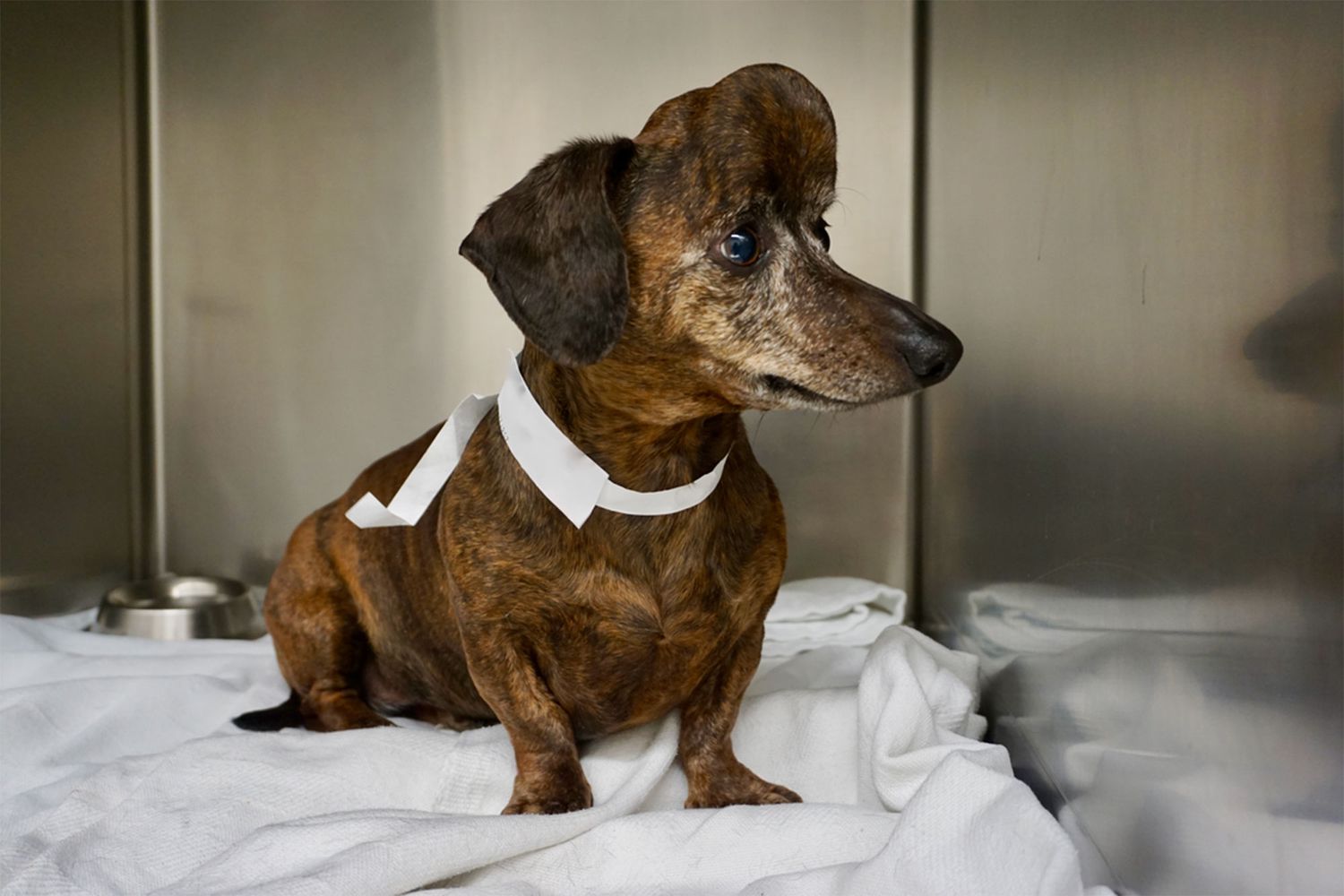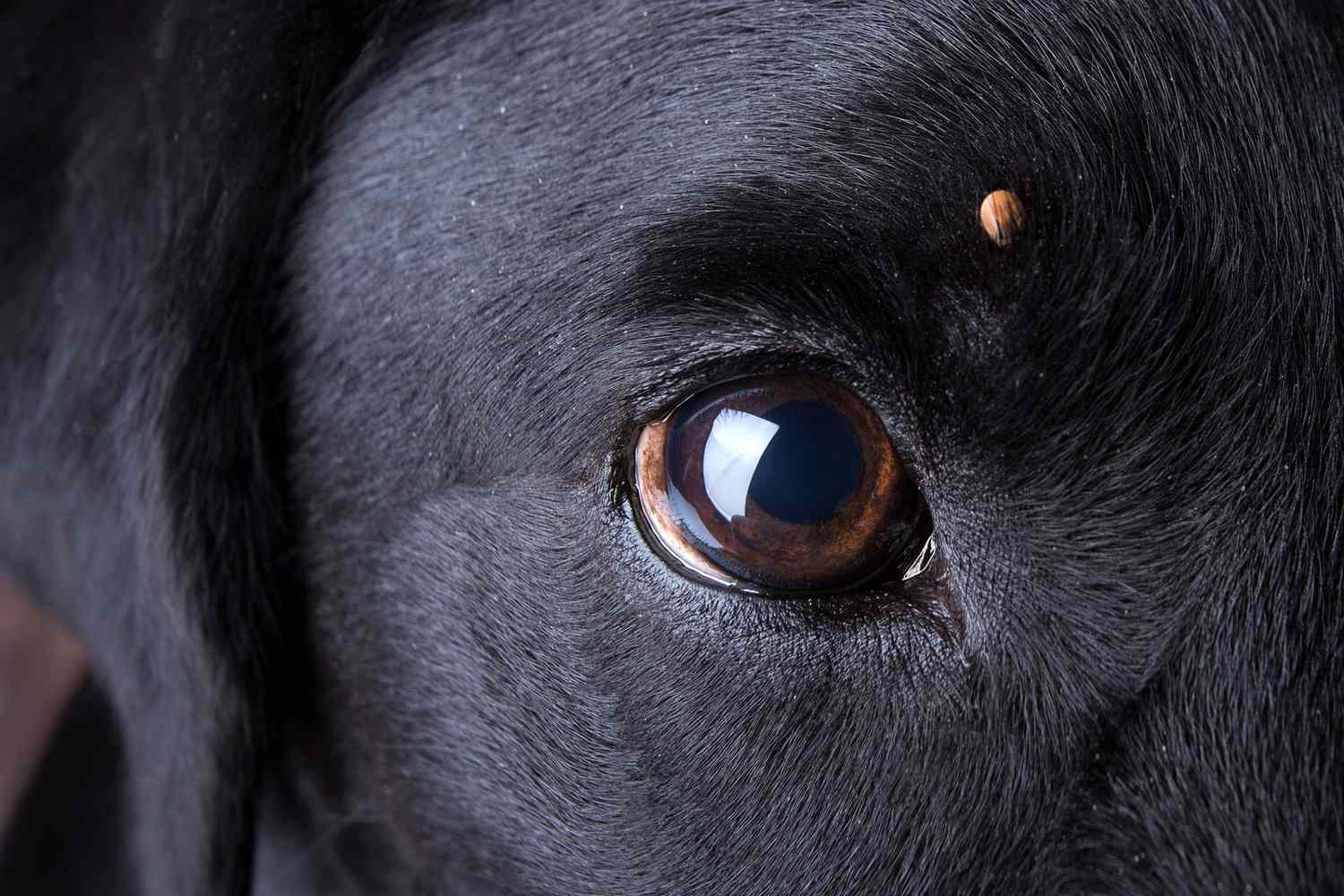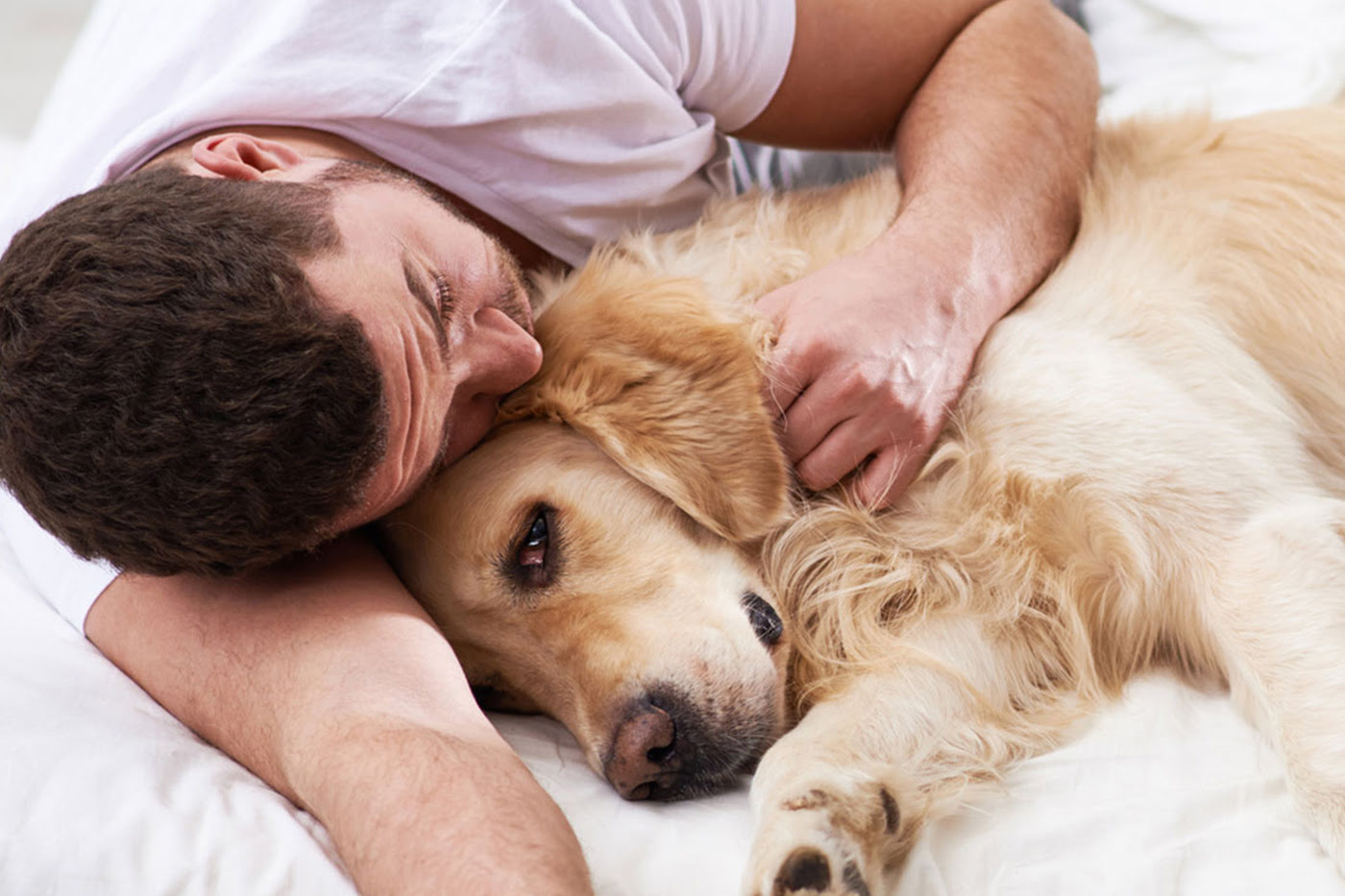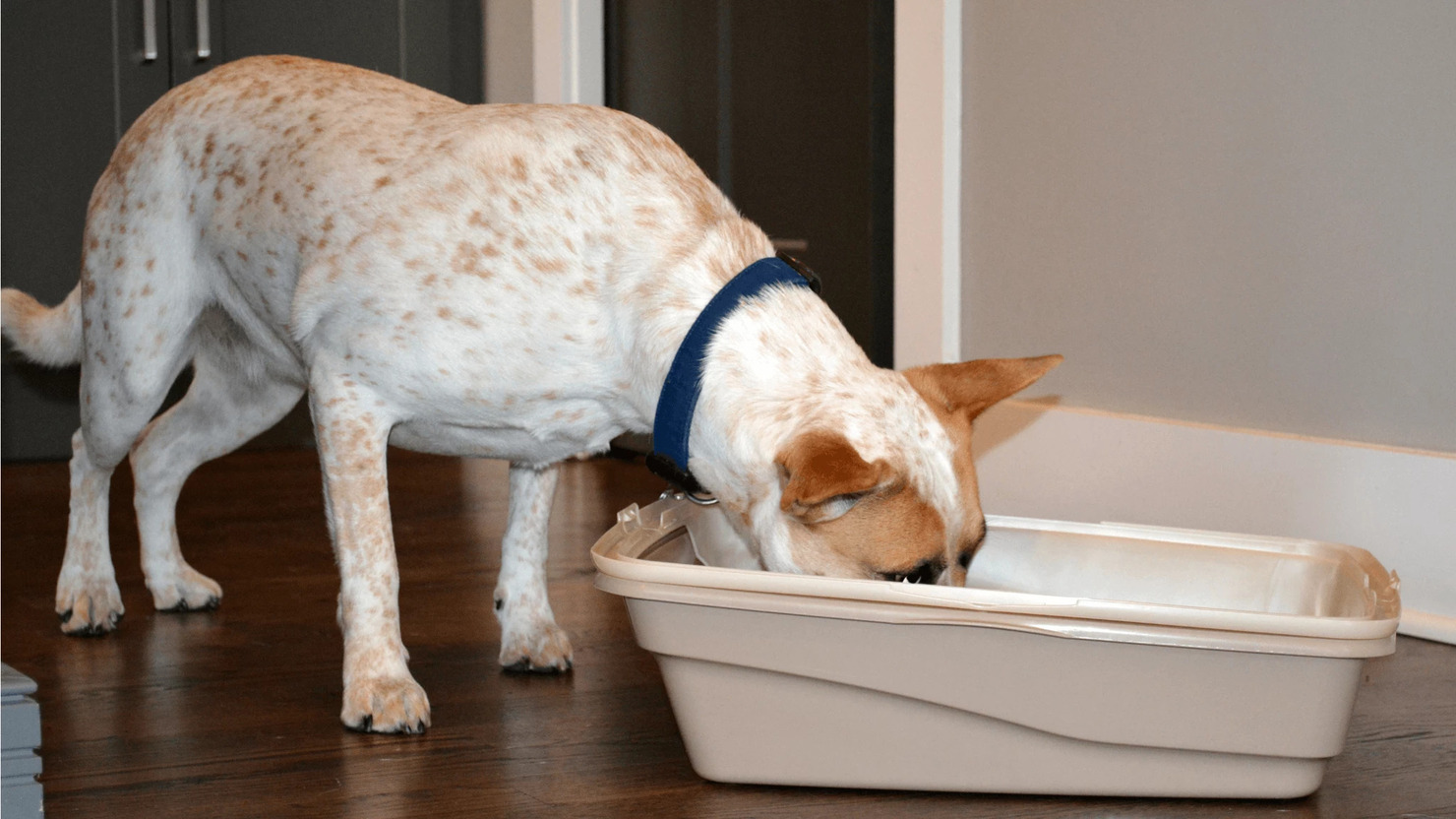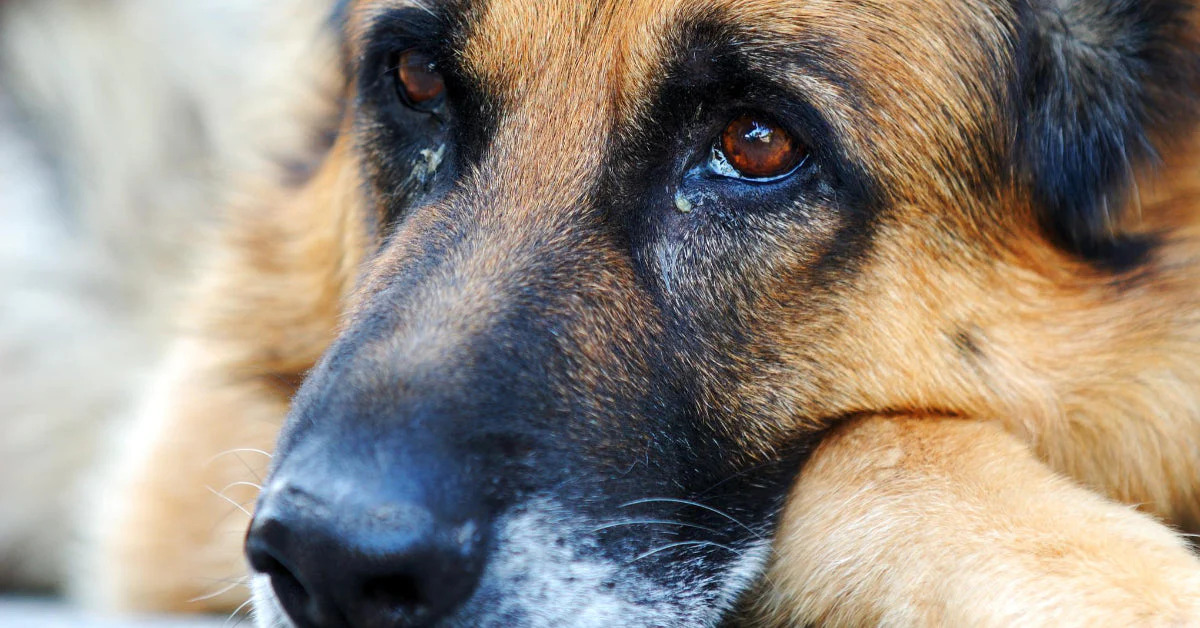Home>Health & Wellness>Common Health Issues>What Happens When Dogs Get Cancer


Common Health Issues
What Happens When Dogs Get Cancer
Published: February 5, 2024
Learn about common health issues in dogs, including what happens when dogs get cancer. Understand the signs, symptoms, and treatment options.
(Many of the links in this article redirect to a specific reviewed product. Your purchase of these products through affiliate links helps to generate commission for Pawsomeoldies.com, at no extra cost. Learn more)
Table of Contents
Introduction
Cancer is a formidable adversary, not only for humans but also for our beloved canine companions. When dogs are diagnosed with cancer, it can be a distressing and overwhelming experience for their owners. Understanding the nature of canine cancer, its symptoms, diagnosis, treatment options, and preventive measures is crucial for providing the best possible care for our furry friends.
Canine cancer is a complex and multifaceted disease that can affect dogs of all breeds, ages, and sizes. Just like in humans, cancer in dogs involves the abnormal growth of cells, which can form tumors and spread to other parts of the body. The impact of cancer on a dog's health and well-being can be profound, often leading to discomfort, pain, and a decline in overall quality of life.
As responsible pet owners, it's essential to be aware of the prevalence of cancer in dogs and the various forms it can take. By recognizing the signs and symptoms of cancer early on, we can seek prompt veterinary care and explore treatment options that may improve our canine companions' prognosis and quality of life.
In this comprehensive guide, we will delve into the world of canine cancer, shedding light on the common types of cancer that affect dogs, the telltale signs of the disease, the diagnostic process, available treatment modalities, and strategies for coping with a dog's cancer diagnosis. Furthermore, we will explore proactive measures that can help reduce the risk of cancer in dogs, emphasizing the importance of preventive healthcare and lifestyle choices that can positively impact our furry friends' long-term well-being.
By gaining a deeper understanding of canine cancer and the steps we can take to support our dogs through this challenging journey, we can empower ourselves to make informed decisions and provide compassionate care for our loyal companions. Let's embark on this enlightening exploration of canine cancer, equipping ourselves with the knowledge and insight needed to navigate this complex terrain with love, empathy, and resilience.
Read more: What Happens When A Dog Has Colon Cancer
Understanding Canine Cancer
Canine cancer, much like its human counterpart, is a complex and multifaceted disease characterized by the abnormal and uncontrolled growth of cells within a dog's body. This unregulated cellular proliferation can lead to the formation of tumors, which may be benign or malignant. Malignant tumors, also known as cancerous growths, have the potential to invade surrounding tissues and spread to other parts of the body, a process known as metastasis.
The development of cancer in dogs can be influenced by a myriad of factors, including genetic predisposition, environmental exposures, and age. While cancer can affect dogs of any breed, age, or size, certain breeds may have a higher susceptibility to specific types of cancer. For instance, larger dog breeds may be more prone to bone cancer, while smaller breeds may have a higher incidence of certain types of skin cancer.
Understanding the underlying mechanisms of canine cancer involves delving into the intricate biological processes that govern cell growth, differentiation, and regulation. In healthy organisms, cell division is tightly controlled, ensuring that new cells are produced when needed and that old or damaged cells are eliminated. However, in the context of cancer, this regulatory system becomes disrupted, leading to the unchecked proliferation of abnormal cells.
The causes of canine cancer are multifaceted and may include genetic mutations, exposure to carcinogens, compromised immune function, hormonal imbalances, and other complex factors. Additionally, the aging process itself can contribute to an increased risk of cancer in dogs, as cellular repair and regulatory mechanisms may become less efficient over time.
By comprehending the fundamental nature of canine cancer, pet owners can gain insight into the potential risk factors that may predispose their dogs to this disease. This understanding can empower pet owners to be vigilant in monitoring their dogs' health, recognizing early warning signs, and seeking timely veterinary care when necessary.
In the subsequent sections of this guide, we will delve deeper into the specific types of cancer that commonly affect dogs, the symptoms that may indicate the presence of cancer, the diagnostic procedures used to identify the disease, available treatment options, and strategies for coping with a dog's cancer diagnosis. Through this comprehensive exploration, we aim to equip pet owners with the knowledge and resources needed to navigate the challenges of canine cancer with compassion, resilience, and informed decision-making.
Common Types of Cancer in Dogs
Cancer can manifest in various forms within a dog's body, affecting different organs, tissues, and systems. Understanding the common types of cancer in dogs is essential for recognizing potential warning signs and seeking appropriate veterinary care. The following are some prevalent types of cancer that can impact our canine companions:
-
Lymphoma: Lymphoma is one of the most frequently diagnosed cancers in dogs. It originates in the lymphatic system, which plays a crucial role in immune function. Dogs with lymphoma may exhibit symptoms such as swollen lymph nodes, lethargy, decreased appetite, and weight loss.
-
Mast Cell Tumors: Mast cell tumors are a type of skin cancer that can occur in dogs. These tumors arise from mast cells, which are involved in allergic responses. They can appear as lumps or bumps on the skin and may vary in size and texture. It's important to monitor any unusual skin growths on your dog and have them evaluated by a veterinarian.
-
Osteosarcoma: Osteosarcoma is a bone cancer that commonly affects larger dog breeds. It is characterized by the formation of malignant tumors within the bone tissue, often leading to lameness, swelling, and localized pain. Osteosarcoma typically occurs in the long bones of the legs and can be quite aggressive.
-
Hemangiosarcoma: This type of cancer originates in the blood vessels and can affect various organs, including the spleen, liver, and heart. Hemangiosarcoma may not exhibit noticeable symptoms until it reaches an advanced stage, making early detection challenging. Common signs may include weakness, pale gums, and abdominal distension.
-
Melanoma: Melanoma is a form of skin cancer that arises from melanocytes, the pigment-producing cells in the skin. While melanomas can occur in any breed, they are more prevalent in dogs with heavily pigmented skin. These tumors may appear as dark, irregular growths on the skin or in the mouth.
-
Bladder Cancer: Bladder cancer, also known as transitional cell carcinoma, can affect the urinary system in dogs. Symptoms may include blood in the urine, increased frequency of urination, and straining during urination. Bladder cancer can be challenging to diagnose and manage, often requiring a comprehensive veterinary approach.
-
Mammary Gland Tumors: Unspayed female dogs are at risk of developing mammary gland tumors, which can be benign or malignant. Regular breast examinations and spaying at an early age can significantly reduce the likelihood of these tumors.
Understanding these common types of cancer in dogs empowers pet owners to remain vigilant and proactive in monitoring their dogs' health. Early detection and intervention can significantly impact the prognosis and quality of life for dogs diagnosed with cancer. If you notice any concerning symptoms or abnormalities in your dog, seeking prompt veterinary evaluation is crucial for timely diagnosis and treatment.
Symptoms of Cancer in Dogs
Recognizing the potential symptoms of cancer in dogs is paramount for early detection and intervention. While the signs of cancer can vary depending on the type and location of the disease, there are several common symptoms that pet owners should be mindful of:
-
Unexplained Weight Loss: Sudden or unexplained weight loss in dogs can be indicative of an underlying health issue, including cancer. If your dog experiences a noticeable decrease in body weight without a change in diet or exercise routine, it's essential to seek veterinary evaluation.
-
Lumps and Swellings: Palpable lumps, bumps, or swellings on the body, particularly beneath the skin, should be promptly examined by a veterinarian. While not all lumps are cancerous, any new or rapidly growing masses warrant professional assessment.
-
Persistent Lethargy: Dogs with cancer may exhibit prolonged periods of lethargy, appearing unusually tired or lacking in energy. This persistent lethargy can be a subtle yet significant indicator of an underlying health concern.
-
Changes in Appetite: A sudden decrease or increase in appetite, coupled with unexplained weight changes, can signal a potential health issue, including cancer. Monitoring your dog's eating habits and addressing any notable shifts is crucial.
-
Difficulty Breathing: Respiratory distress, labored breathing, or persistent coughing can be symptomatic of certain types of cancer, particularly those affecting the lungs or respiratory system.
-
Abnormal Discharge: Unusual discharge from the nose, eyes, ears, or other bodily orifices should be promptly evaluated by a veterinarian. Discharge that is persistent, discolored, or malodorous may indicate an underlying health issue, including cancer.
-
Changes in Bathroom Habits: Alterations in urination or defecation patterns, including blood in the urine or stool, difficulty urinating, or changes in stool consistency, can be indicative of various health concerns, including cancer.
-
Persistent Lameness or Pain: Dogs experiencing persistent lameness, localized pain, or discomfort, particularly without a clear cause such as injury or physical exertion, should receive thorough veterinary assessment.
-
Visible Wounds that Don't Heal: Wounds, sores, or ulcers that do not heal within a reasonable timeframe may warrant investigation, as they can be indicative of underlying health issues, including certain types of cancer.
-
Behavioral Changes: Noticeable shifts in behavior, such as increased irritability, anxiety, or restlessness, can sometimes be linked to an underlying health condition, including cancer.
It's important to note that while these symptoms can raise suspicion of cancer, they are not exclusive to the disease and can be associated with various other health issues. Therefore, if you observe any of these signs in your dog, it's crucial to seek professional veterinary care for a comprehensive evaluation and appropriate diagnostic testing. Early detection and intervention can significantly impact the prognosis and quality of life for dogs diagnosed with cancer.
Diagnosing Canine Cancer
Diagnosing canine cancer is a multifaceted process that involves a comprehensive evaluation of a dog's health, coupled with various diagnostic modalities aimed at identifying the presence of cancerous growths. When a dog exhibits symptoms suggestive of cancer or if there are concerns about the possibility of the disease, prompt veterinary intervention is crucial for an accurate diagnosis. The diagnostic journey for canine cancer typically encompasses the following key components:
Read more: What Happens When A Dog Has Stomach Cancer
Veterinary Examination
The initial step in diagnosing canine cancer involves a thorough physical examination conducted by a veterinarian. During this examination, the veterinarian will assess the dog's overall health, palpate for any abnormal lumps or swellings, and inquire about the dog's medical history and presenting symptoms. This comprehensive evaluation serves as the foundation for further diagnostic investigations.
Diagnostic Imaging
Diagnostic imaging techniques, such as X-rays, ultrasound, and advanced imaging modalities like CT scans and MRIs, play a pivotal role in identifying potential tumors, assessing their size and location, and evaluating the extent of their impact on surrounding tissues. These imaging studies provide valuable insights into the presence of abnormal growths within the dog's body and aid in formulating a comprehensive diagnostic plan.
Biopsy and Cytology
In cases where suspicious masses or tumors are identified, a biopsy or cytology may be recommended to obtain a definitive diagnosis. A biopsy involves the surgical removal of a tissue sample from the suspected tumor, which is then examined under a microscope by a veterinary pathologist to determine whether cancerous cells are present. Cytology, on the other hand, involves the collection of cellular samples through fine-needle aspiration or other minimally invasive techniques, allowing for microscopic analysis to identify abnormal cell populations.
Blood Tests and Laboratory Analysis
Blood tests and laboratory analyses are valuable tools in the diagnostic process, providing insights into the dog's overall health, organ function, and potential markers of cancer. Specific blood tests may assess parameters such as complete blood count, blood chemistry profiles, and tumor markers, which can offer valuable diagnostic clues and aid in formulating a comprehensive understanding of the dog's health status.
Read more: What Happens When A Dog Gets Tick Paralysis
Specialized Testing
In certain cases, specialized testing such as immunohistochemistry, flow cytometry, or molecular diagnostics may be employed to further characterize the nature of the suspected cancerous growths. These advanced testing modalities can provide detailed information about the cellular and molecular characteristics of the tumors, aiding in the formulation of targeted treatment strategies.
By integrating these diagnostic approaches, veterinarians can work towards establishing a definitive diagnosis of canine cancer, enabling them to develop tailored treatment plans and provide compassionate care for dogs affected by this challenging disease. Early and accurate diagnosis is pivotal in facilitating timely intervention and maximizing the potential for successful treatment outcomes and improved quality of life for dogs battling cancer.
Treatment Options for Dogs with Cancer
The treatment of cancer in dogs encompasses a diverse array of modalities aimed at addressing the specific type of cancer, its stage, and the overall health status of the affected dog. The primary objective of cancer treatment in dogs is to alleviate symptoms, slow the progression of the disease, and improve the dog's quality of life. The following are common treatment options employed in managing cancer in dogs:
Surgery
Surgical intervention is a fundamental component of cancer treatment in dogs, particularly for localized tumors that are amenable to surgical removal. The goal of surgery is to excise the cancerous growth, along with a margin of healthy tissue, to minimize the likelihood of recurrence. In cases where complete removal of the tumor is feasible, surgery can offer a curative approach for certain types of cancer.
Chemotherapy
Chemotherapy involves the administration of anti-cancer drugs to impede the growth and spread of cancer cells. While the concept of chemotherapy may evoke concerns about potential side effects, modern veterinary oncology has made significant strides in tailoring chemotherapy protocols to minimize adverse effects and optimize efficacy. Chemotherapy can be employed as a standalone treatment or in combination with other modalities, such as surgery or radiation therapy.
Radiation Therapy
Radiation therapy utilizes targeted radiation to destroy cancer cells and shrink tumors. This modality is particularly beneficial for tumors that are challenging to access surgically or for cases where surgery alone may not achieve complete tumor eradication. Advanced techniques, such as stereotactic radiation therapy, enable precise targeting of tumors while minimizing radiation exposure to surrounding healthy tissues.
Immunotherapy
Immunotherapy harnesses the dog's immune system to recognize and combat cancer cells. This innovative approach involves the administration of immune-modulating agents, vaccines, or immune checkpoint inhibitors to stimulate an anti-cancer immune response. Immunotherapy holds promise as a complementary or standalone treatment modality, offering new avenues for managing certain types of cancer in dogs.
Palliative Care
In situations where a cure may not be achievable, palliative care focuses on enhancing the dog's comfort and quality of life. This may involve pain management, nutritional support, and supportive therapies to alleviate symptoms and promote well-being. Palliative care aims to prioritize the dog's comfort and dignity while navigating the challenges associated with advanced cancer.
Clinical Trials and Experimental Therapies
Participation in clinical trials and access to experimental therapies can offer dogs with cancer access to cutting-edge treatments and novel therapeutic approaches. These initiatives contribute to the advancement of veterinary oncology and may provide valuable options for dogs with challenging or refractory forms of cancer.
The selection of an appropriate treatment approach for a dog with cancer hinges on a comprehensive assessment of the disease, the dog's overall health, and the owner's preferences and resources. Veterinary oncologists work closely with pet owners to develop tailored treatment plans that align with the dog's well-being and the family's goals. By leveraging a combination of these treatment modalities, veterinarians strive to optimize outcomes and enhance the quality of life for dogs battling cancer.
Coping with a Dog's Cancer Diagnosis
Receiving a cancer diagnosis for a beloved canine companion can be an emotionally turbulent and challenging experience for pet owners. Coping with the news of a dog's cancer diagnosis entails navigating a spectrum of emotions, making difficult decisions, and providing unwavering support for the furry family member. Here are essential strategies for coping with a dog's cancer diagnosis:
Emotional Support
Upon learning of a dog's cancer diagnosis, pet owners often experience a range of emotions, including shock, sadness, and anxiety. It's crucial to acknowledge and process these emotions, seeking support from family, friends, or professional counselors if needed. Sharing feelings and concerns with others who understand the unique bond between humans and their dogs can provide solace and emotional resilience during this challenging time.
Informed Decision-Making
Navigating the treatment options and decisions associated with a dog's cancer diagnosis requires careful consideration and informed decision-making. Pet owners should engage in open and transparent discussions with their veterinary team, seeking detailed information about the available treatment modalities, potential outcomes, and associated considerations. Understanding the benefits, risks, and expected quality of life for the dog under various treatment scenarios empowers pet owners to make decisions aligned with their dog's well-being and their family's circumstances.
Quality of Life Focus
Amidst the complexities of cancer treatment, prioritizing the dog's quality of life is paramount. Pet owners should collaborate closely with their veterinary team to develop a comprehensive care plan that emphasizes the dog's comfort, pain management, and emotional well-being. This may involve integrating palliative care measures, such as pain relief strategies, dietary adjustments, and environmental accommodations, to optimize the dog's overall quality of life throughout the cancer journey.
Cherishing Moments
Embracing and cherishing meaningful moments with the dog becomes a poignant aspect of coping with a cancer diagnosis. Engaging in activities that bring joy and comfort to the dog, such as leisurely walks, favorite playtime routines, and affectionate interactions, fosters a sense of normalcy and connection amidst the challenges posed by the disease. These moments serve as cherished memories and affirm the enduring bond between the dog and their human family.
Support Networks
Seeking support from fellow pet owners who have navigated similar experiences can provide valuable insights, empathy, and a sense of community. Online forums, support groups, and local pet-centric communities offer platforms for sharing experiences, exchanging practical tips, and finding solace in the shared love for dogs. Connecting with others who understand the nuances of caring for a dog with cancer can alleviate feelings of isolation and offer a source of strength and understanding.
Self-Care
Amidst the focus on the dog's well-being, pet owners must prioritize their own self-care. Engaging in activities that promote personal well-being, such as exercise, relaxation techniques, and spending time with supportive loved ones, is essential for maintaining emotional resilience and navigating the challenges associated with a dog's cancer diagnosis. By tending to their own emotional and physical needs, pet owners can sustain the strength and compassion needed to provide unwavering support for their canine companion.
Coping with a dog's cancer diagnosis is a profound and deeply personal journey, characterized by emotional fortitude, compassionate care, and unwavering dedication. By embracing these coping strategies and fostering a supportive environment for both the dog and themselves, pet owners can navigate the complexities of canine cancer with resilience, empathy, and an enduring commitment to their cherished furry family member.
Preventing Cancer in Dogs
Preventing cancer in dogs involves a proactive and multifaceted approach aimed at minimizing potential risk factors and promoting overall well-being. While it's not always possible to completely eliminate the risk of cancer, implementing preventive measures can significantly contribute to the long-term health and vitality of our canine companions. Here are essential strategies for reducing the risk of cancer in dogs:
Balanced Nutrition
Providing a balanced and nutritious diet is fundamental to supporting a dog's overall health and immune function. High-quality commercial dog foods or well-formulated homemade diets should incorporate essential nutrients, antioxidants, and omega-3 fatty acids, which play a role in bolstering the body's natural defense mechanisms. Additionally, avoiding excessive calorie intake and maintaining a healthy body weight can contribute to reducing the risk of certain cancers, such as mammary tumors and insulinoma.
Regular Exercise
Regular physical activity not only promotes cardiovascular health and musculoskeletal strength in dogs but also contributes to overall immune system function. Engaging in routine exercise and playtime activities can help manage weight, reduce stress, and enhance the dog's overall well-being, potentially mitigating the risk of certain cancers, including those associated with obesity and sedentary lifestyles.
Environmental Awareness
Minimizing exposure to environmental carcinogens and toxins is crucial for cancer prevention. This includes avoiding secondhand smoke, limiting exposure to pesticides, herbicides, and other chemical agents, and ensuring that the dog's living environment is free from potential hazards. Additionally, being mindful of potential carcinogenic substances in household products, such as cleaning agents and lawn care chemicals, can contribute to creating a safer living environment for dogs.
Routine Veterinary Care
Regular veterinary check-ups and preventive care are essential for monitoring a dog's health and detecting potential health concerns early on. This includes scheduling routine wellness exams, vaccinations, parasite control, and dental care. Veterinarians can provide guidance on cancer prevention strategies, conduct thorough physical examinations, and offer insights into lifestyle modifications that can positively impact a dog's long-term health.
Read more: What Happens If You Get Bitten By A Dog Tick
Spaying and Neutering
Spaying female dogs and neutering male dogs at an appropriate age can significantly reduce the risk of certain types of cancer, including mammary gland tumors, ovarian and uterine cancers in females, and testicular and prostate cancers in males. Early spaying and neutering, as recommended by veterinary professionals, can contribute to a dog's overall health and longevity.
Genetic Screening
For certain dog breeds with known predispositions to specific types of cancer, genetic screening and counseling can offer valuable insights into potential risk factors. By identifying genetic markers associated with increased cancer risk, pet owners and veterinarians can develop tailored preventive strategies and surveillance plans to mitigate the impact of hereditary factors on a dog's health.
By integrating these preventive measures into a dog's lifestyle and healthcare regimen, pet owners can take proactive steps to reduce the risk of cancer and promote their canine companions' long-term well-being. While cancer prevention cannot guarantee immunity from the disease, these strategies serve as foundational pillars for fostering a healthy and vibrant life for our beloved dogs.
Conclusion
In conclusion, the journey through the realm of canine cancer is a multifaceted and emotionally charged experience, encompassing the complexities of diagnosis, treatment, and the unwavering bond between dogs and their human companions. Understanding the nature of canine cancer, its prevalence, and the diverse array of treatment modalities is pivotal for pet owners as they navigate the challenges posed by this formidable disease.
From the initial recognition of potential symptoms to the comprehensive diagnostic process and the exploration of treatment options, pet owners are empowered to advocate for their canine companions' well-being and make informed decisions in collaboration with their veterinary team. The journey of coping with a dog's cancer diagnosis involves emotional fortitude, compassionate care, and a commitment to prioritizing the dog's quality of life amidst the complexities of treatment.
Furthermore, the proactive measures aimed at preventing cancer in dogs underscore the significance of holistic wellness, balanced nutrition, environmental awareness, and routine veterinary care in fostering a resilient foundation for canine health. By integrating these preventive strategies into a dog's lifestyle, pet owners can contribute to mitigating potential risk factors and promoting their furry companions' long-term vitality.
Throughout this comprehensive guide, the emphasis on emotional support, informed decision-making, and the cherishing of meaningful moments underscores the profound bond between dogs and their human families. The journey through canine cancer is characterized by resilience, empathy, and an unwavering commitment to providing compassionate care for our loyal companions.
As we navigate the complexities of canine cancer, it is essential to recognize the enduring impact of the human-canine bond, the resilience of the canine spirit, and the transformative power of unwavering dedication and love. By embracing these insights and fostering a supportive environment for both dogs and their human companions, we honor the enduring bond that defines the profound relationship between humans and their beloved canine companions.
